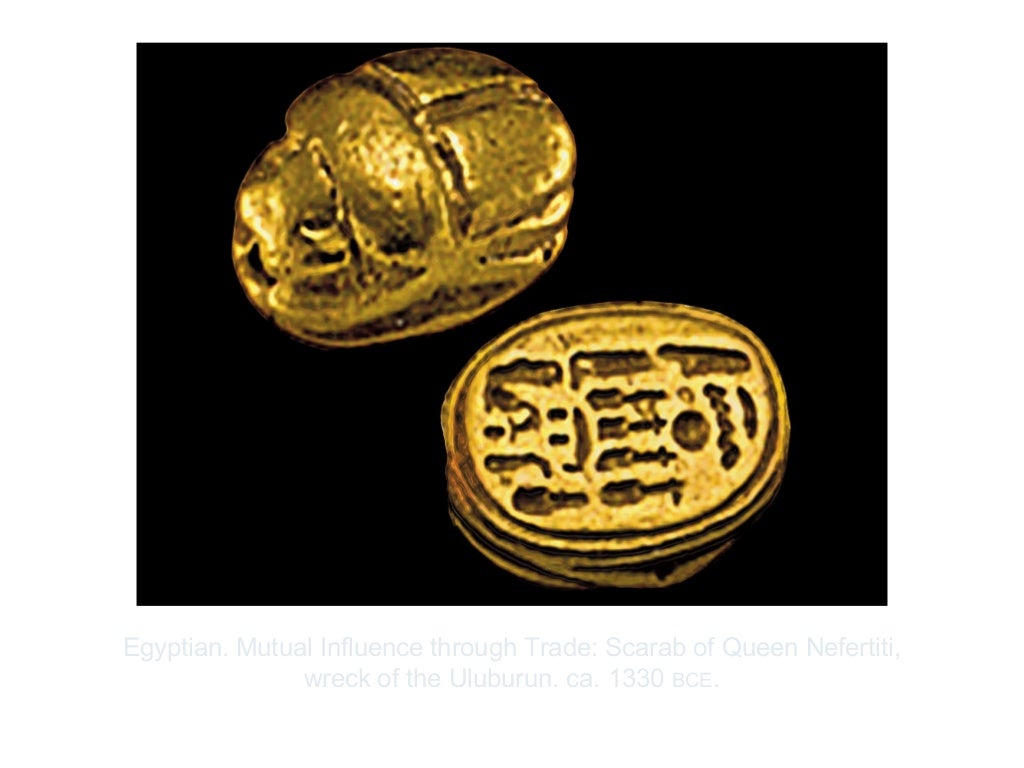A gold scarab of Nefertiti (conventional date c. 1370 to c. 1330 BC) was found on Uluburun II, which was also saddled on right away, but it showed a lot of wear from handling, probably centuries' worth.
BTW, there is some wear on the artifact, but there's no way to say "centuries of wear" -- most people are familiar with the appearance of coins (gold or not) that have been in circulation for decades and show signs of wear. I should have made clear that the wear on the artifact was estimated -- but if you've seen a photo, judge for yourself how much wear can be estimated. Since the conventional pseudochronology *requires* that very little wear appear on the coin, due to the age the CP requires this ship to be, having a very worn artifact of Nefertiti in the cargo is, at best, problematical. If anything, the Uluburun II wreck has been a nightmare for those who cling to the CP like a dingleberry to an ass hair.
©2012 Pearson Inc. Egyptian. Mutual Influence through Trade: Scarab of Queen Nefertiti,wreck of the Uluburun. ca...
I don't think I'd seen this one before. Same page has a photo of the museum display of the above Nefertiti scarab, along with other artifact displays presumably from the museum. Amulet of Astarte:
Gold pendant from the Uluburun shipwreck (nisudapi)

